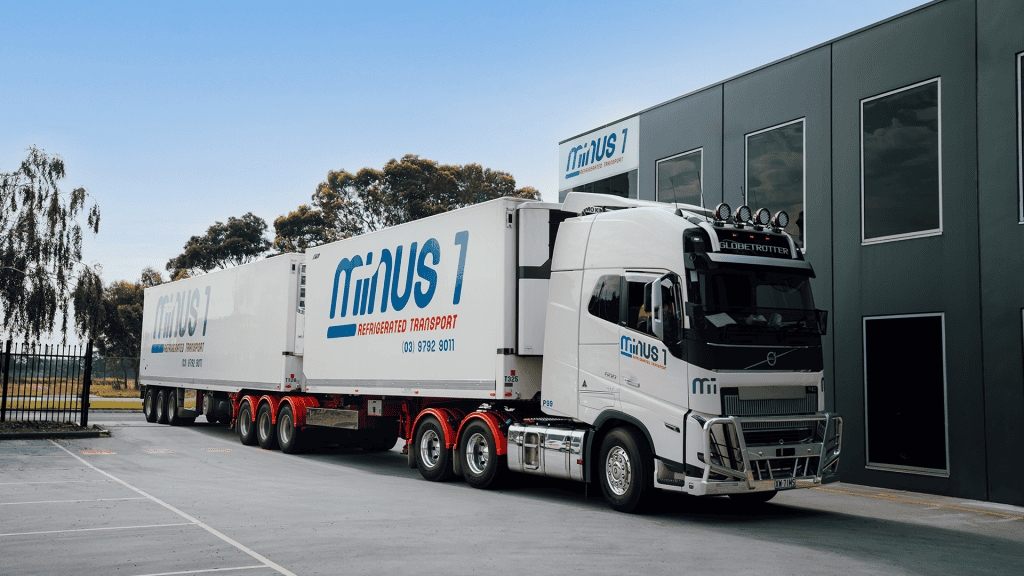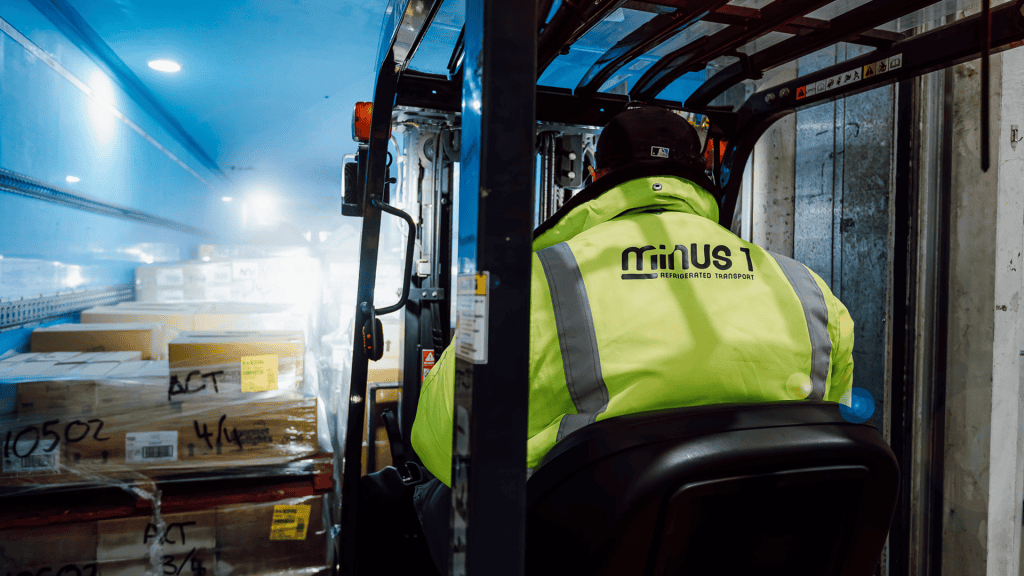When you’re transporting frozen goods across the country there is one thing you can’t afford to mess up: temperature control. It’s not just about keeping your goods cool; it’s about understanding the science and the stakes.
At Minus 1, we transport frozen goods all over the country with precision and care because we understand that products being delivered on time means nothing if they’re not safe for purchase or use.
Let’s break down why getting this right is critical for your business.
The Real Cost of Temperature Slip-ups
Think temperature control is just another box to tick?
Think again. This isn’t just about keeping your goods from going bad; it’s a matter of public health and your business’s reputation.
First off, it’s a health and safety issue, and it’s non-negotiable. Get it wrong, and you’re not just looking at a spoiled shipment; you’re potentially putting consumers at risk.
The National Institutes of Health (NIH) has been pretty clear about this: incorrect temperature management can lead to bacterial growth, which can cause serious food-borne illnesses.
We’re talking about the kind of stuff that can land your customers in the hospital and your brand in the headlines – and not in a good way.
But it’s not just about health risks. Let’s talk about waste – and I mean serious waste.
Food Bank Australia has laid out some eye-opening numbers: a staggering 7.6 million tonnes of food is wasted annually in Australia.
A good chunk of that comes down to poor temperature control during transport. That’s tonnes of produce, meat, dairy, you name it, just thrown away. And let’s be real – that’s not just food waste; that’s your money going straight into the bin.
So, when we talk about temperature control in logistics, we’re not just talking about a ‘nice-to-have’ feature.
We’re talking about a critical component of your operation that impacts everything from consumer safety to your bottom line.
It’s about taking responsibility, not just for your products, but for the people who consume them and the environment we all share.
You Need The Right Fleet For The Job
Playing dice with temperature is off the table.
We understand that the difference between a few degrees can be the make or break for your product’s integrity.
That’s why our fleet is equipped to handle a wide temperature range – from a mild 4 degrees for those sensitive, chilled items, right down to a deep freeze at -20 for goods that need to stay frozen solid.
Each of our vehicles is fitted with state-of-the-art temperature control technology.
This means we can dial in the exact temperature your goods need, ensuring they’re maintained in peak condition throughout their journey.
Whether it’s fresh produce that needs to stay crisp, dairy products that require a cool environment, or pharmaceuticals that demand strict temperature guidelines, we’ve got it covered.
Different Products Have Different Temperature Needs
Different products have different temperature needs, and straying even slightly from these can mean the difference between a product that arrives in perfect condition and one that’s compromised.
Take fresh produce, for instance. Autima highlights a crucial point: to maintain their freshness and nutritional value, fruits and vegetables need to be kept within a narrow temperature range of 0°C to 5°C.
This isn’t just about avoiding spoilage; it’s about preserving the very essence of the product – its taste, texture, and health benefits. Stray above 5°C, and you risk accelerated ripening and decay. Dip below 0°C, and you might end up with frost damage.
It’s more than just setting a thermostat. It’s about understanding the unique properties of each type of produce. Leafy greens, for example, have different requirements than root vegetables. Berries are more temperature-sensitive compared to apples.
This knowledge is crucial in maintaining the perfect balance – not too cold, not too hot, just right.
This approach to temperature control is what upholds the integrity of your products.
It’s not just about avoiding the negatives of spoilage or damage; it’s about actively preserving quality, ensuring that what arrives at the destination is as good as when it left its origin.
In the end, it’s this commitment to maintaining the perfect balance that makes all the difference in delivering products that meet, and often exceed, expectations.
10 Things To Check When You’re Looking To Hire A New Transport Provider
When selecting a provider for transporting your frozen goods, it’s crucial to consider several key factors to ensure that your products are handled correctly and arrive in optimal condition.
Here are 10 essential things to check for:
1. Temperature Control Capabilities: Ensure the provider has the capability to maintain the specific temperature range required for your frozen goods, typically around -18°C to -20°C.
2. Reliability of Equipment: Check that the provider uses well-maintained, reliable refrigeration equipment that can consistently maintain low temperatures, even in varying external conditions.
3. Real-Time Temperature Monitoring: Look for providers who offer real-time temperature monitoring and reporting, so you can be assured that the correct temperature is maintained throughout the journey.
4. Experience with Frozen Goods: Choose a provider with experience in handling and transporting frozen goods, as they’ll understand the nuances and challenges specific to these types of products.
5. Emergency Protocols: Inquire about their emergency protocols in case of equipment failure or other issues that could jeopardise the temperature integrity of your goods.
6. Compliance and Certifications: Ensure the provider complies with relevant industry standards and regulations for frozen goods transportation. Check for certifications that indicate adherence to quality and safety standards.
7. Insulated and Secure Vehicles: The vehicles should be well-insulated to maintain internal temperatures. Security measures should also be in place to protect the goods from theft or tampering.
8. Flexible and Responsive Service: The provider should be able to accommodate your specific needs, including urgent requests or special handling requirements, and respond promptly to any concerns or changes.
9. Proven Track Record: Look for a provider with a strong track record of successfully transporting frozen goods. Testimonials, case studies, or references from other clients can be valuable.
10. Transparent Communication: Choose a provider who offers clear, ongoing communication about your shipment, including updates on the status and any potential issues that arise during transit.
Selecting the right provider for transporting your frozen goods is critical to ensure they arrive in the best possible condition, maintaining their quality and safety.
By considering these factors, you can make an informed decision and establish a reliable partnership for your logistics needs.
Final Thoughts
Temperature control is king. It’s not just keeping things cool; it’s understanding the science, the risks, and the solutions. At Minus 1, we’re not just a logistics provider; we’re your partner in getting this right.
Let’s talk about how we can tailor a solution that fits your business needs.
Speak to us today and discover the difference of working with Minus 1
References:
1. NCBI: Estimating Foodborne Gastroenteritis, Australia
https://www.ncbi.nlm.nih.gov/pmc/articles/PMC3320479/
2. Food Bank Australia: Food Waste Facts in Australia
https://www.foodbank.org.au/food-waste-facts-in-australia/?state=qld
3. Autima: [Importance of Temperature Monitoring for Perishable Goods
https://autima.com.au/the-importance-of-temperature-monitoring-for-perishable-goods



